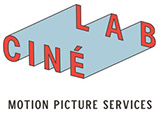Which Kodak filmstock do you miss the most?
If Kodak would return one filmstock from the past, which one would you want?
25 members have voted
-
1. If Kodak would return one filmstock from the past, which one would you want?
-
Ektachrome Commercial 7252 asa 25 Tungsten.2
-
Kodachrome Commercial.1
-
Kodachrome 25 daylight.3
-
Ektachrome 7244 ES8 asa 160.1
-
Kodak 4-X B&W Negative asa 500.0
-
Kodak 4-X B&W Reversal asa 400.2
-
Magnetically prestriped Super 8.8
-
Magnetically prestriped 16mm.0
-












Recommended Posts
Create an account or sign in to comment
You need to be a member in order to leave a comment
Create an account
Sign up for a new account in our community. It's easy!
Register a new accountSign in
Already have an account? Sign in here.
Sign In Now